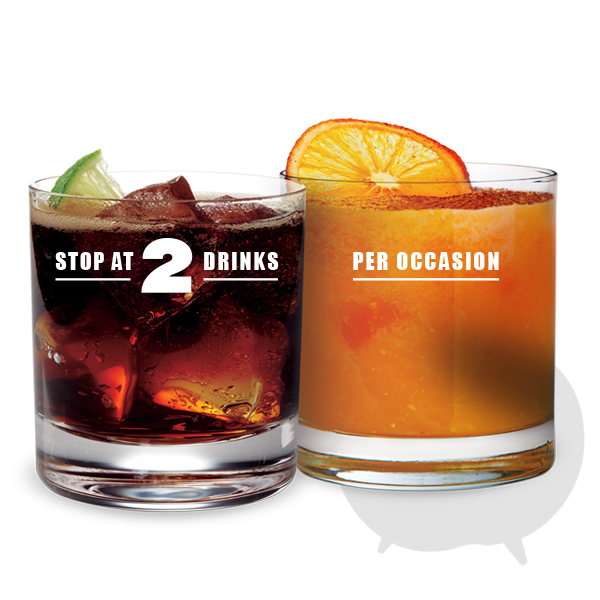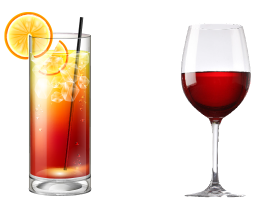Be alcohol aware.

Some drinks, such as certain coolers, fortified wines or specialty drinks, have more alcohol.
For example, a cooler may have 7% alcohol content, so it’s not a standard drink. Some drinks, like port can have 20% alcohol content or a liqueur like brandy can have an alcohol content of 25%.
Then there are specialty drinks, like a martini or Long Island Iced Tea which combine a variety of alcohols. A martini for instance may have up to three shots of various types of alcohol, so one martini could equal 3 beers. Long Island Iced Tea has four shots, so one drink equals four beers.
Knowing what a standard drink is helps you lower short- and long-term health risks.
When a person drinks alcoholic beverages, their blood alcohol concentration (BAC) increases.
What is blood alcohol concentration?
Blood alcohol concentration (BAC) is the amount of alcohol in your blood stream. Basically it’s a measurement in milligrams of alcohol per 100 ml of blood. It’s written as milligrams percent, or mg%. In Canada, it is a criminal offence to drive with a BAC of 80 mg% (often referred to as “.08”) or higher.
People with alcohol in their systems are less alert; their inhibitions are lower and their judgment impaired, which causes them to do things they usually wouldn’t do. People with a high BAC may not notice warning signs, like their body telling them they’ve had enough to drink, and they don’t react as quickly to things around them.
Manitoba takes a tough stance on impaired driving and the allowed driver BAC is less than 50 mg% (often referred to as “.05”). While 80 mg% remains the level for a criminal charge, drivers who are found to have a BAC of 50 mg% or higher will receive an immediate licence suspension, a fine, have their vehicle impounded and will have to pay a fee to reinstate their licence.


When zero's the limit.

Driving a vehicle. Alcohol and driving NEVER mix.
Pregnant or planning to become pregnant.
Breastfeeding an infant.
Making important decisions.
Doing any kind of dangerous physical activity.
Using machinery or tools.
Taking medicine or other drugs, including cannabis, that interact with alcohol.
Living with mental or physical health problems.
Living with alcohol dependence.
Responsible for the safety of others.
When zero's the limit.
What about special occasions?
We all have reasons to celebrate and often times, alcohol is involved when there is a special occasion. You can reduce your risk of harm including injuries from falls, motor vehicle crashes, or abusive or violent behaviour by limiting alcoholic drinks to no more than 2 drinks over a 3-hour timeframe.
Always plan to drink in a safe environment with people you know and trust.

It’s a fact that risks increase when alcohol is involved. Most Canadians know that
drinking alcohol increases the long-term risks of health conditions like cirrhosis, high-blood pressure, stroke, fetal alcohol spectrum disorder, and some types of cancer. But did you know that there are short-term risks of drinking? Drinking alcohol increases your risk of injuries from motor vehicle crashes, falls, and abusive or violent behaviour. Drinking also increases your risk of other harms, like alcohol poisoning, losing control, making bad decisions or embarrassing yourself. To reduce your risk, drink with people you know and where you know you’ll be in a safe environment.
If you’re worried about your drinking, talk to your doctor or contact the Addictions Foundation of Manitoba’s Helpline at 1-855-662-6605 (toll-free).
Canada’s Low-Risk Alcohol Drinking Guidelines were developed by a team of independent Canadian and international experts in partnership with the Canadian Centre on Substance Abuse and Addiction. All provinces, including Manitoba, have endorsed the low-risk alcohol drinking guidelines.
The LGCA regulates liquor, gambling and cannabis in the province. Part of the LGCA’s role is to educate Manitobans about responsible gambling and the responsible consumption of alcohol and cannabis.

